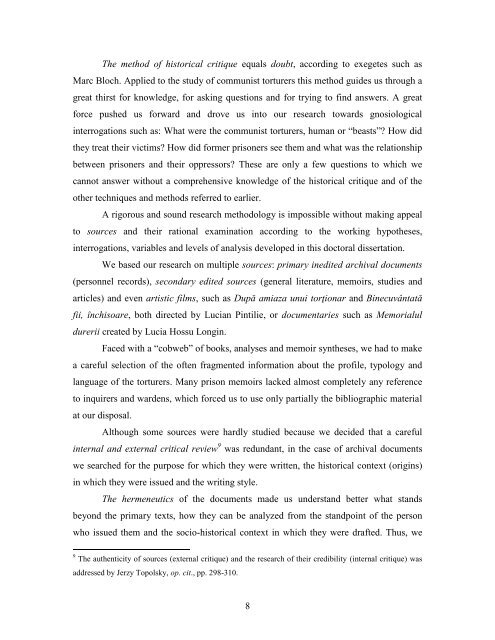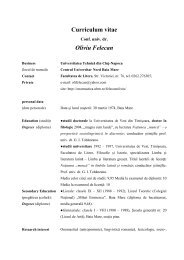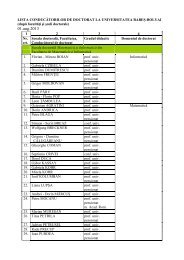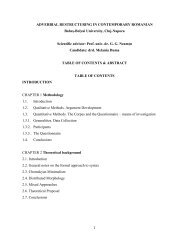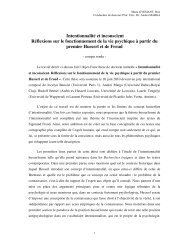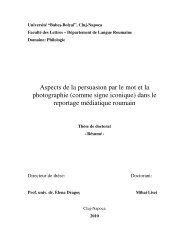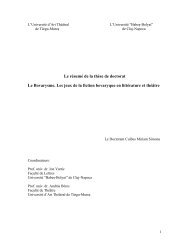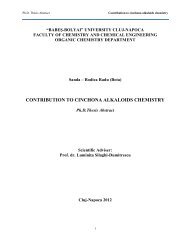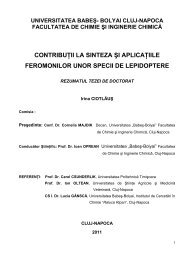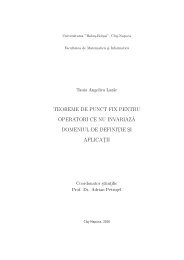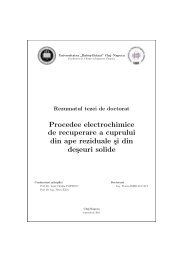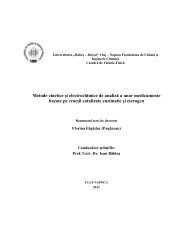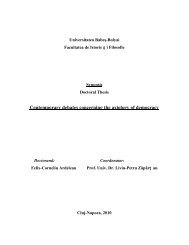The image of the communist torturer as reflected
The image of the communist torturer as reflected
The image of the communist torturer as reflected
Create successful ePaper yourself
Turn your PDF publications into a flip-book with our unique Google optimized e-Paper software.
<strong>The</strong> method <strong>of</strong> historical critique equals doubt, according to exegetes such <strong>as</strong><br />
Marc Bloch. Applied to <strong>the</strong> study <strong>of</strong> <strong>communist</strong> <strong>torturer</strong>s this method guides us through a<br />
great thirst for knowledge, for <strong>as</strong>king questions and for trying to find answers. A great<br />
force pushed us forward and drove us into our research towards gnosiological<br />
interrogations such <strong>as</strong>: What were <strong>the</strong> <strong>communist</strong> <strong>torturer</strong>s, human or “be<strong>as</strong>ts”? How did<br />
<strong>the</strong>y treat <strong>the</strong>ir victims? How did former prisoners see <strong>the</strong>m and what w<strong>as</strong> <strong>the</strong> relationship<br />
between prisoners and <strong>the</strong>ir oppressors? <strong>The</strong>se are only a few questions to which we<br />
cannot answer without a comprehensive knowledge <strong>of</strong> <strong>the</strong> historical critique and <strong>of</strong> <strong>the</strong><br />
o<strong>the</strong>r techniques and methods referred to earlier.<br />
A rigorous and sound research methodology is impossible without making appeal<br />
to sources and <strong>the</strong>ir rational examination according to <strong>the</strong> working hypo<strong>the</strong>ses,<br />
interrogations, variables and levels <strong>of</strong> analysis developed in this doctoral dissertation.<br />
We b<strong>as</strong>ed our research on multiple sources: primary inedited archival documents<br />
(personnel records), secondary edited sources (general literature, memoirs, studies and<br />
articles) and even artistic films, such <strong>as</strong> După amiaza unui torţionar and Binecuvântată<br />
fii, închisoare, both directed by Lucian Pintilie, or documentaries such <strong>as</strong> Memorialul<br />
durerii created by Lucia Hossu Longin.<br />
Faced with a “cobweb” <strong>of</strong> books, analyses and memoir syn<strong>the</strong>ses, we had to make<br />
a careful selection <strong>of</strong> <strong>the</strong> <strong>of</strong>ten fragmented information about <strong>the</strong> pr<strong>of</strong>ile, typology and<br />
language <strong>of</strong> <strong>the</strong> <strong>torturer</strong>s. Many prison memoirs lacked almost completely any reference<br />
to inquirers and wardens, which forced us to use only partially <strong>the</strong> bibliographic material<br />
at our disposal.<br />
Although some sources were hardly studied because we decided that a careful<br />
internal and external critical review 9 w<strong>as</strong> redundant, in <strong>the</strong> c<strong>as</strong>e <strong>of</strong> archival documents<br />
we searched for <strong>the</strong> purpose for which <strong>the</strong>y were written, <strong>the</strong> historical context (origins)<br />
in which <strong>the</strong>y were issued and <strong>the</strong> writing style.<br />
<strong>The</strong> hermeneutics <strong>of</strong> <strong>the</strong> documents made us understand better what stands<br />
beyond <strong>the</strong> primary texts, how <strong>the</strong>y can be analyzed from <strong>the</strong> standpoint <strong>of</strong> <strong>the</strong> person<br />
who issued <strong>the</strong>m and <strong>the</strong> socio-historical context in which <strong>the</strong>y were drafted. Thus, we<br />
9 <strong>The</strong> au<strong>the</strong>nticity <strong>of</strong> sources (external critique) and <strong>the</strong> research <strong>of</strong> <strong>the</strong>ir credibility (internal critique) w<strong>as</strong><br />
addressed by Jerzy Topolsky, op. cit., pp. 298-310.<br />
8


